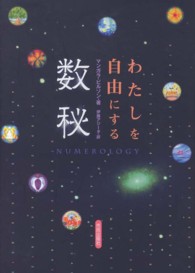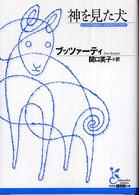- ホーム
- > 洋書
Full Description
This volume approaches the UN as a laboratory of religio-political value politics. Over the last two decades religion has acquired increasing influence in international politics, and religious violence and terrorism has attracted much scholarly attention. But there is another parallel development which has gone largely unnoticed, namely the increasing political impact of peaceful religious actors. With several religious actors in one place and interacting under the same conditions, the UN is as a multi-religious society writ small. The contributors to this book analyse the most influential religious actors at the UN (including The Roman Catholic Church; The Organisation of Islamic Countries; the Russian Orthodox Church). Mapping the peaceful political engagements of religious actors; who they are and how they collaborate with each other - whether on an ad hoc basis or by forming more permanent networks - throwing light at the modus operandi of religious actors at the UN; their strategies and motivations. The chapters are closely interrelated through the shared focus on the UN and common theoretical perspectives, and pursue two intertwined aspects of religious value politics, namely the whys and hows of cross-religious cooperation on the one hand, and the interaction between religious actors and states on the other. Drawing together a broad range of experts on religious actors, this work will be of great interest to students and scholars of Religion and Politics, International Relations and the UN.
Contents
Part I RELIGION AT THE UNITED NATIONSChapter 1: Engaging on global issues in a UN setting: Religious actors [Katherine Marshall]Chapter 2: The United Alliance of Civilisations and improved global dialogue [Jeffrey Haynes]Chapter 3: Hate speech and holy prophets: Tracing the OIC's strategies to protect religion [Marie Juul Petersen and Heini Skorini]Chapter 4: Negotiating traditional values. The Russian Orthodox Church [Vebjorn Horsfjord]Chapter 5: Internal affairs? Assessing NGO engagement for religious freedom [Helge Arsheim]Chapter 6: Religion, state and symbol politic. The Catholic Church [Anne Stensvold]PART II RELIGION AND STATEChapter 7: Emerging international subjects. The Royal 'Peel' Commission, Palestine partition and religious difference [Maria Birnbaum] Chapter 8: Religious voices: American faith perspectives as an example [Katherine Marshall]Chapter 9: Dynamic perspectives on defamation of religion among Jewish NGOs[Gabriel Levy and Miriam Kyselo]Chapter 10: Human rights and the Tunisian constitution [Ragnhild J. Zorgati]Chapter 11: Norway, religion and the United Nations [Ingrid Vik and Cecilie Endresen]Concluding remarks[Anne Stensvold]






